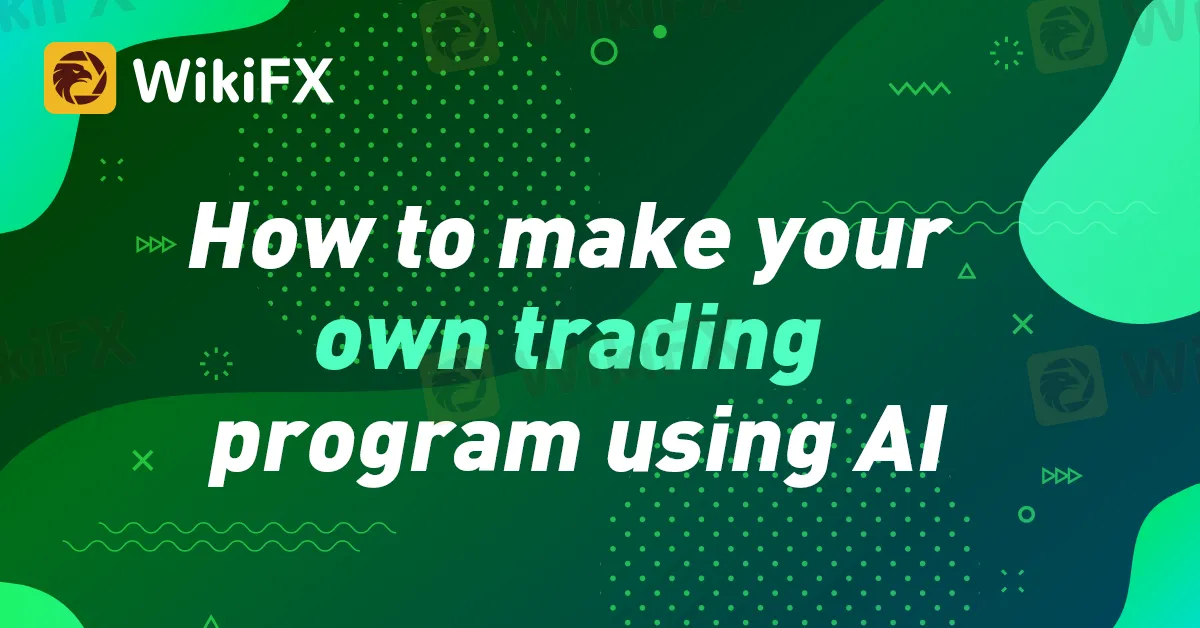简体中文
繁體中文
English
Pусский
日本語
ภาษาไทย
Tiếng Việt
Bahasa Indonesia
Español
हिन्दी
Filippiiniläinen
Français
Deutsch
Português
Türkçe
한국어
العربية
How to make your own trading program using AI
Abstract:Trading robots, also known as algorithmic trading programs or automated trading systems, are becoming increasingly popular among traders.

Trading robots, also known as algorithmic trading programs or automated trading systems, are becoming increasingly popular among traders. These programs use artificial intelligence (AI) and machine learning algorithms to analyze market data and execute trades automatically, without human intervention. In this article, well explore the steps involved in creating a trading robot using AI.
Step 1: Determine Your Trading Strategy
The first step in building a trading robot is to determine your trading strategy. Your strategy should be based on market data and should be well-defined and tested. It‘s important to keep in mind that a trading robot is only as good as the strategy it’s based on.
Step 2: Collect and Analyze Market Data
The next step is to collect and analyze market data. This includes historical price data, news articles, and other relevant information that may affect the market. You‘ll need to determine which data is relevant to your trading strategy and how you’ll analyze it. Machine learning algorithms can be used to analyze large amounts of data and identify patterns that may be difficult for humans to see.
Step 3: Choose an AI Framework
There are many AI frameworks available for building trading robots, including TensorFlow, Keras, and PyTorch. Choose a framework that is well-suited to your needs and experience level.
Step 4: Develop and Test Your Algorithm
Using your chosen AI framework, develop and test your algorithm. This involves training your machine learning algorithm on historical market data and testing it on a separate set of data to see how well it performs. Youll need to refine your algorithm until it produces accurate and profitable trades.
Step 5: Implement Your Algorithm in a Trading Platform
Once your algorithm has been developed and tested, you‘ll need to implement it in a trading platform. This involves connecting your algorithm to a broker’s trading API and setting up automated trades based on the signals generated by your algorithm. You‘ll also need to monitor your robot’s performance and make adjustments as necessary.
Step 6: Monitor and Optimize Your Robot
Finally, its important to monitor and optimize your trading robot on an ongoing basis. This includes monitoring its performance, making adjustments to your algorithm as market conditions change, and ensuring that your robot is always up-to-date with the latest market data.
Conclusion
Building a trading robot using AI can be a complex and time-consuming process, but it can also be highly rewarding. With the right strategy, data analysis, and AI framework, you can create a robot that can execute trades automatically and profitably. As always, its important to remember that trading involves risk and that no trading robot can guarantee profits. However, by following these steps and continuing to refine your robot over time, you can increase your chances of success in the markets.

Disclaimer:
The views in this article only represent the author's personal views, and do not constitute investment advice on this platform. This platform does not guarantee the accuracy, completeness and timeliness of the information in the article, and will not be liable for any loss caused by the use of or reliance on the information in the article.
Read more

Why More People Are Trading Online Today?
Discover why online trading is booming with tech, AI, and a push for financial freedom. From stocks to crypto, it’s a thrilling hustle for all.

High Return Traps? WikiFX’s Complete Scam-Busting Handbook to Avoid Financial Fraud!
Financial scams are evolving faster than ever, and fraudsters are getting more creative in luring victims into traps. Whether it’s promising high returns or leveraging authority to build trust, scammers continuously innovate new ways to trick investors. From clone firms to cold calling schemes, it’s essential to understand how these scams work to protect your hard-earned money. This comprehensive guide by WikiFX will help you recognize and avoid common financial scams.

Unlocking the Power of Algo Trading: Benefits and Limitation
Algorithmic trading merges speed, data, and automation—but can it outsmart human intuition and market chaos? Explore its power and pitfalls.

Do This ONE Thing to Transform Your Trading Performance Forever
The story is all too familiar. You start trading with high hopes, make some quick profits, and feel like you've finally cracked the code. But then, just as fast as your gains came, they disappear. Your account balance dwindles, and soon you’re left wondering what went wrong. Worse still, fear and confusion creep in, making every new trade a stressful gamble rather than a calculated decision. If this cycle sounds familiar, you’re not alone.
WikiFX Broker
Latest News
How Crypto Trading Transforms FX and CFD Brokerage Industry
FCA Warns Against 10 Unlicensed or Clone Firms
CySEC Warns Against 14 Unlicensed Investment Websites
Top Currency Pairs to Watch for Profit This Week - March 31, 2025
Will natural disasters have an impact on the forex market?
Philippines Deports 29 Indonesians Linked to Online Scam Syndicate in Manila
Exposing the Top 5 Scam Brokers of March 2025: A Closer Look by WikiFX
Gold Prices Climb Again – Have Investors Seized the Opportunity?
Webull Launches SMSF Investment Platform with Zero Fees
Australian Regulator Warns of Money Laundering and Fraud Risks in Crypto ATMs
Currency Calculator







